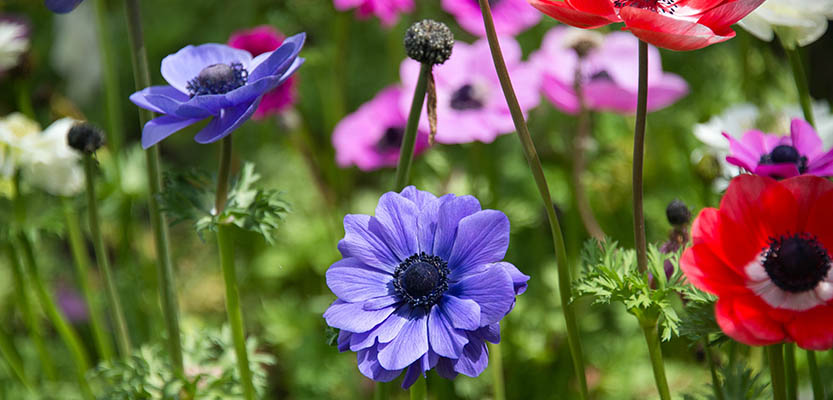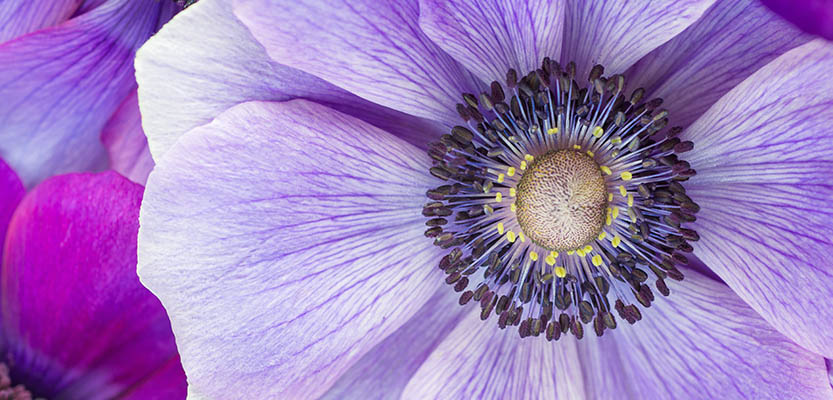
Common Names
Windflower
Pasque Flower (referring specifically to some species in the genus)
Scientific Name
Anemone spp.
Family & Genus
Family: Ranunculaceae
Genus: Anemone
Description
Anemones are herbaceous perennials known for their cup-shaped flowers with delicate, silky petals that come in vibrant colors like white, red, pink, purple, blue, and sometimes bicolor. The flowers have a central mass of contrasting dark stamens and can range in size from 1 to 4 inches across. The blooms sit on top of slender stems that rise from mounds of divided, fern-like foliage. Anemones are also called windflowers because their name comes from the Greek word for wind, reflecting their delicate appearance and how their petals move easily in the breeze.
Habitat & Origin
Anemones are native to temperate regions of the Northern Hemisphere, particularly in Europe and North America. They thrive in woodlands, grasslands, and alpine meadows. Different species are found in different climates, from cool, moist forest floors to rocky, mountainous areas.
Symbolism & Meaning
Anticipation: Anemones are often associated with anticipation, partly because the flowers close up at night and reopen in the morning.
Protection Against Evil: In folklore, they are believed to protect against evil and bad luck, as they were thought to have sprung from the blood of Adonis in Greek mythology.
Fleeting Moments: The delicate, short-lived blooms also symbolize the ephemeral nature of life, making them a symbol of fragility and transience.
Uses
Ornamental: Anemones are popular in garden beds, borders, and as cut flowers. They bring an ethereal elegance to floral arrangements and bouquets, often used in wedding flowers.
Medicinal: Some species have been used in traditional medicine, but due to their toxic properties, care is needed in their usage.
Flower Care

Anemones prefer well-drained soil and thrive in partial shade to full sun, depending on the species. They require regular watering during active growth but can tolerate short periods of dryness. When used in floral arrangements, they can last 5–7 days in water, but the stems should be cut at an angle and placed in clean, cool water for best results.
Flowering Season
Anemones have two main flowering periods depending on the species: spring and fall. The spring-blooming varieties, like Anemone blanda (Grecian windflower), bloom in early spring, while fall-blooming varieties, such as Anemone hupehensis (Japanese anemone), flower from late summer through fall.
Varieties & Hybrids
Anemone coronaria: This variety is among the most popular in floral arrangements, with bright, bold flowers in red, white, purple, and pink. It is often referred to as the poppy anemone due to its resemblance to poppies.
Anemone blanda: Known for its daisy-like flowers, this species blooms in shades of blue, pink, and white in early spring.
Anemone hupehensis (Japanese Anemone): A taller, late-blooming variety with pink or white flowers, often used in garden beds to add fall color.
Anemone 'Honorine Jobert': A pure white hybrid that blooms in late summer, known for its elegance and resilience.








